AP Art History - all 250 objects
1/249
Earn XP
Name | Mastery | Learn | Test | Matching | Spaced |
|---|
No study sessions yet.
250 Terms
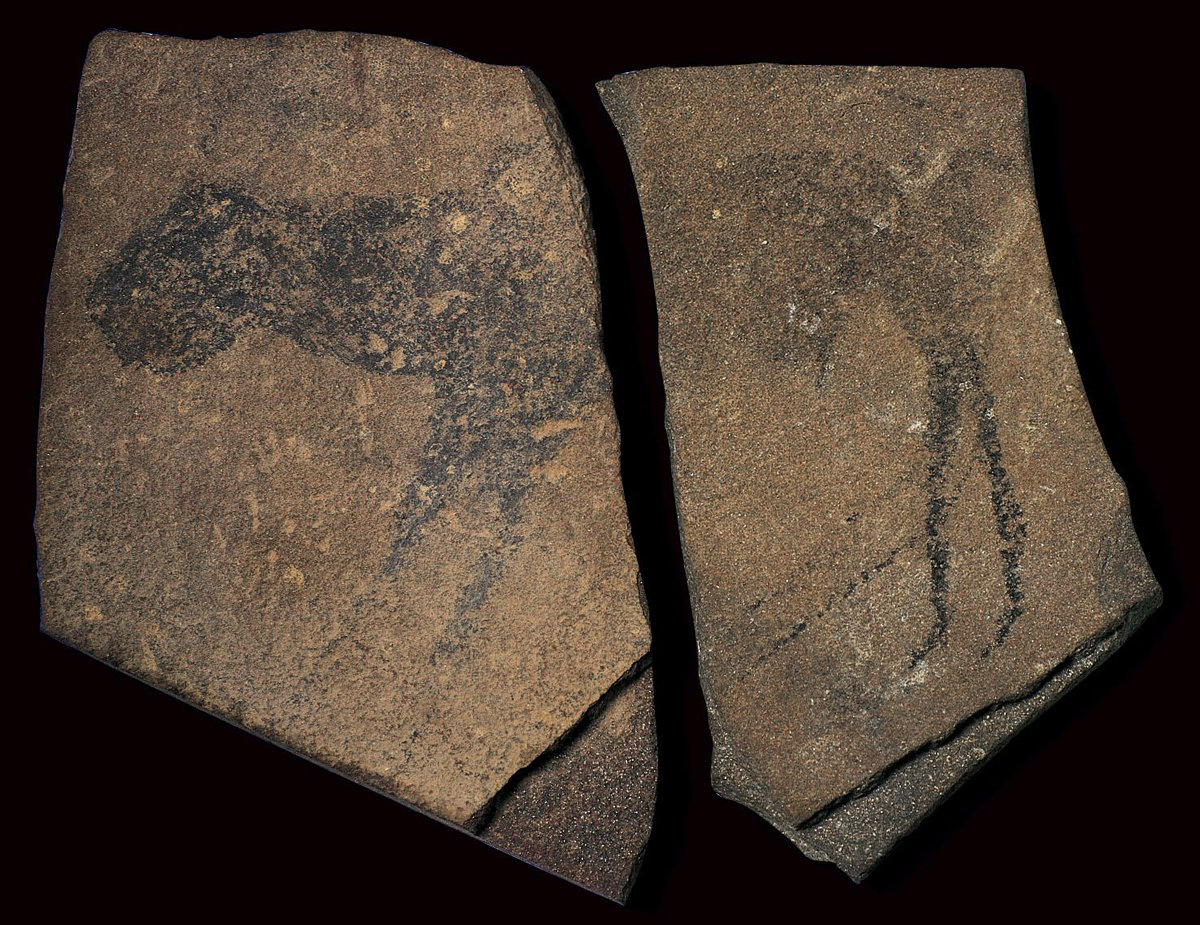
Apollo 11 Cave Stones
Ancient rock art found in Namibia, Africa, 25500 - 25300 BCE
Most likely depicting a Oryx with a bovid (sexual organ) at it’s underbelly. One of the earliest pieces of evidence of human artistic expression worldwide. Cave stones are generally called art mobilier (small-scale prehistoric art that is movable)
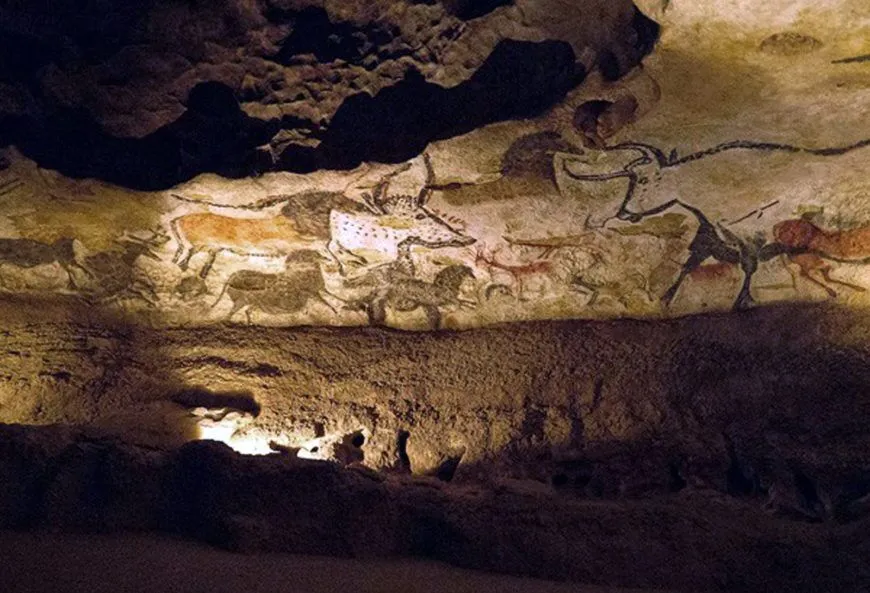
Great Hall of the Bulls
Prehistoric cave painting in Lascaux, France. 1000-13000 BCE.
Features large bulls, horses, and deer. Charcoal and ocher was used to paint these cave paintings, figures are rendered in twisted perspective (bodies are depicted in profile while we see the horns from a more frontal viewpoint). Believed to have been part of the prehistoric idea of ‘‘hunting magic’’ where hunters believed that a way to overpower their prey was to create images of it during rituals to ensure a successful hunt.
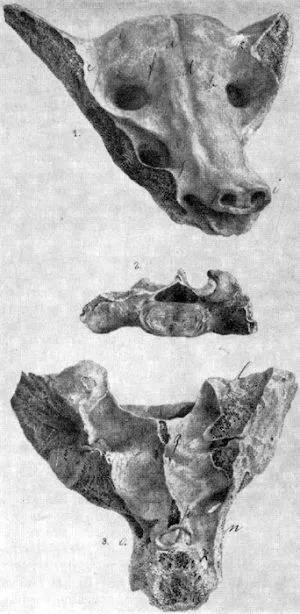
Camelid sacrum in the shape of a canine
Bone sculpture made in Tequixquiac, Mexico. 14000-7000 BCE.
Sculpture appears to look similar to a dog or pig head, could mean ‘sacred bone’ as the bone is located in an area nearby reproductive organs (representing fertility). Though, it is impossible to know for sure as there is no written documentation from the time on the object, as it came before written language.

Running horned woman
Tassili n’Ajjer, Algeria. 6000-4000 BCE. Pigment on rock.
Female figure depicted in rock art. This piece was found in the highest massifs of the region (where rituals would take place), indicating it has a spiritual presence. It is specifically believed to be a symbol of power or fertility. Dots on her body represent scarification (involves intentionally modifying the body to create designs, pictures, or words on skin).
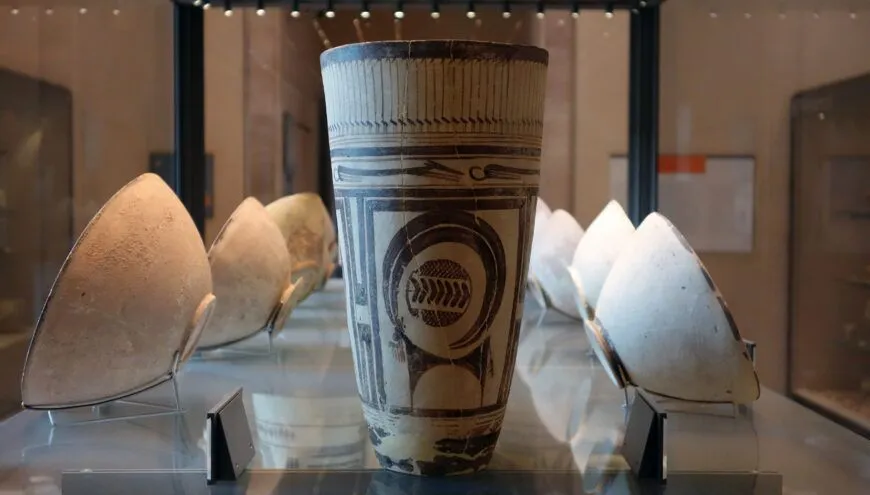
Beaker (bushel) with ibex motifs
Susa, Iran. 4200 - 3500 BCE. Painted terra cotta. Neolithic pottery vessel characterized by a conical shape, decorated with stylized ibex motifs. This piece was likely only made for burial, and it is visually divided by registers, which celebrate agriculture and animal domestication.
REGISTERS
first register: highly repetitive abstract drawings of long-necked birds (potentially Susa waterbirds).
second register: contains abstracted images of dogs, one after another, likely a saluki, or persian gazelle hound.
third, largest (central) register: illustrates an ibex, or mountain goat, whose horns curve in a wide arch to surround a cross-hatched and chevron motif.
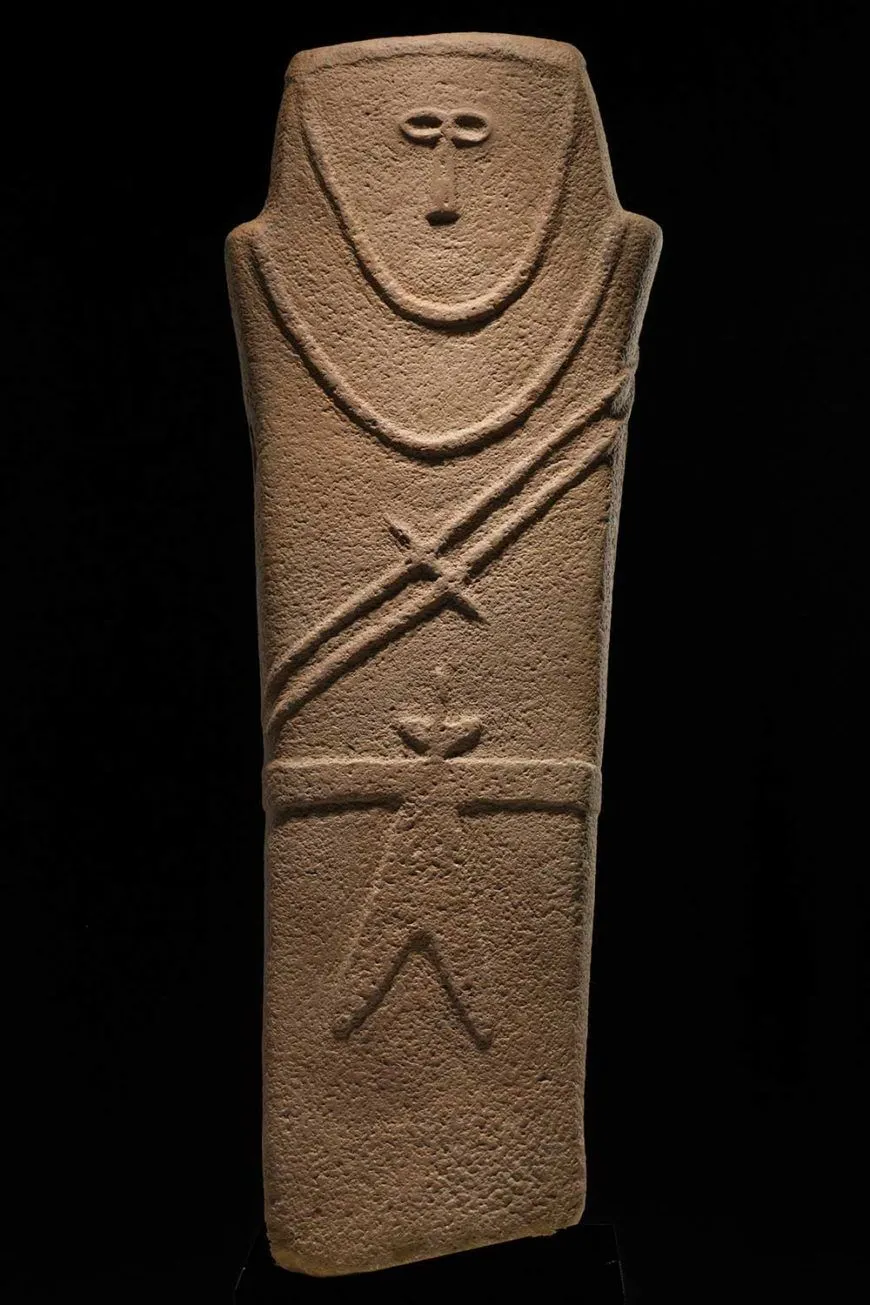
Anthropomorphic stele
Arabian Peninsula. Fourth Millennium BCE. Sandstone
Ancient carved stone slab (a stele, which is a vertical stone monument or marker often inscribed with text or relief carving) depicting abstract human-like features, often used as grave markers or monuments in various cultures.
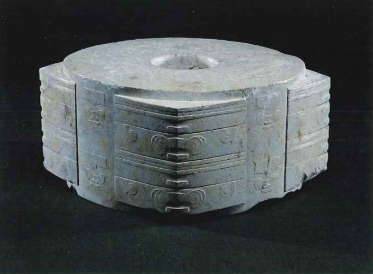
Jade cong
Liangzhu, China. 3300-2200 BCE. Carved Jade
Neolithic Chinese artifact with a cylindrical shape and square hole in the center. Jade is a sacred stone in China, and is difficult to carve, so these were typically made for important (elite) people. Symbolizes unity of heaven and earth in ancient rituals.

Stonehenge
Wiltshire, UK. Neolithic Europe. 2500-1600 BCE. Sandstone
Consists of standing stones arranged in a circular pattern, believed to have astronomical and religious significance. The construction of the structure was broken into 3 phases, as it took much time to align and transport the stone.
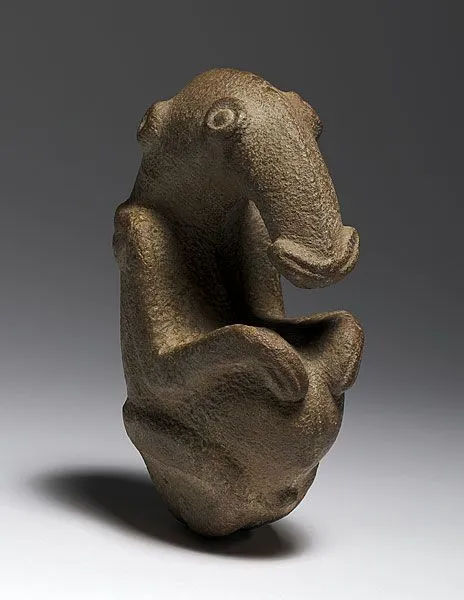
The Ambum stone
Ambum Valley, Enga Province. Papua New Guinea. 1500 BCE. Greywacke.
Small sculpture shaped like a human with a bird-like face, though it has been attributed to many different animals. A mortar and pestle for ritual use in the area they originated from, and were buried with their peoples to ensure safety and fertility for them. The hump near the figures stomach can symbolize fertility along with the practical use of being a mortar.
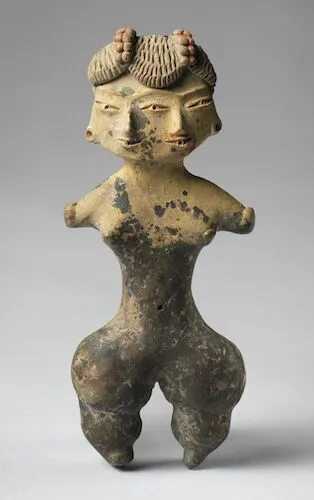
Tlactico female figurine
Central Mexico, site of Tlatilco. 1200-900 BCE. Ceramic.
The Tlactico female figurine is a small ceramic statue from ancient Mexico, representing women in elaborate attire and jewelry to symbolize fertility and abundance. These intricately crafted figurines showcase the cultural heritage of the region, emphasizing the importance of fertility and abundance in society. The double faced aspect of the figure can be attributed to representing duality.
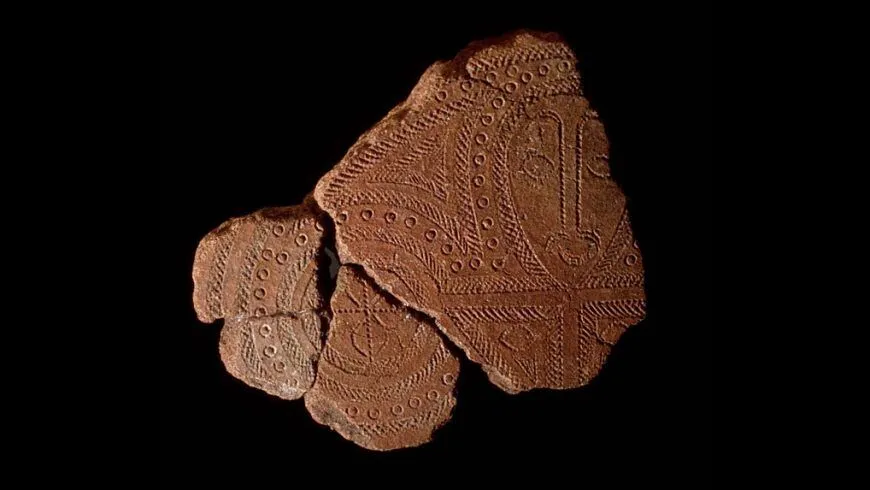
Terra cotta fragment
Lapita. Reef Islands, Solomon Islands. 1000 BCE. Terra cotta (incised).
Pieces of pottery made by the ancient Lapita people who were skilled seafarers and known for their distinctive pottery styles. Could have been used as a plate to put food on, or for storage. These fragments are also known for their anthropomorphic decorative design.
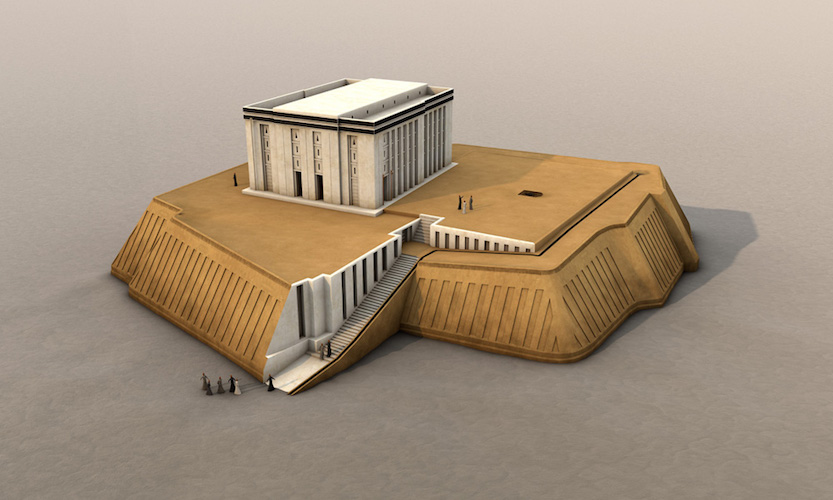
White Temple and its ziggurat
Uruk (Modern Warka, Iraq). Sumerian. 3500-3000 BCE. Mud brick.
Uruk was an important city in southern Mesopotamia. The Anu Ziggurat was the greatest monument within the city and was dedicated to the sky god Anu. Ziggurats were a symbolic and visual focal point of the city and at the heart of the theocratic political system. Visitors would have needed to walk around the temple to gain access to the interior in a typical arrangement for Ancient Near Eastern temples.
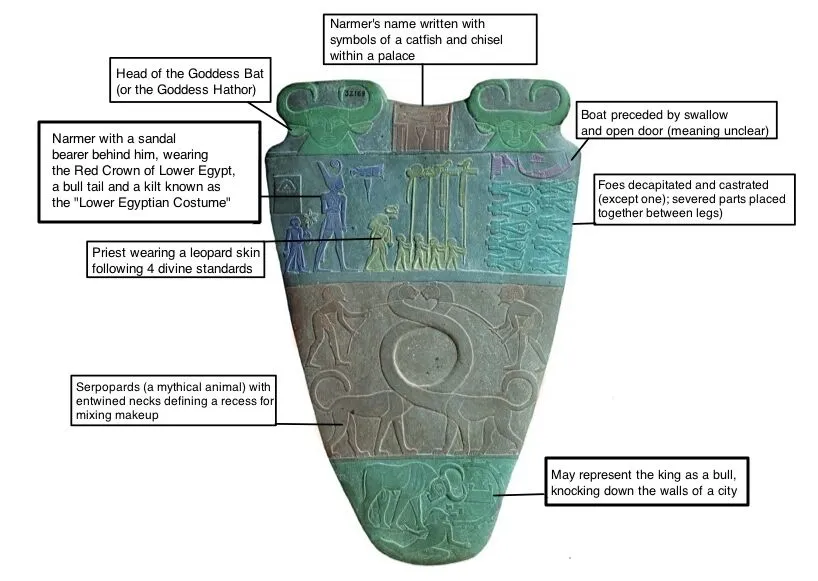
Palette of King Narmer
Predynastic Egypt. 3000-2920 BCE. Greywacke
It was discovered among a group of sacred implements ritually buried in a deposit within an early temple of the falcon god Horus at Hierakonpolis. The palette is decorated with detailed low relief scenes of a king, identified as Narmer, and a series of ambiguous scenes. Its original function as a ritual item dedicated to a god and its complexity of imagery make it a significant object. Through the use of hieratic scale, you can tell that Narmer is the most significant figure in this piece. Palettes were generally flat, minimally decorated stone objects used for grinding and mixing minerals for cosmetics in the Predynastic period. This palette is double sided.
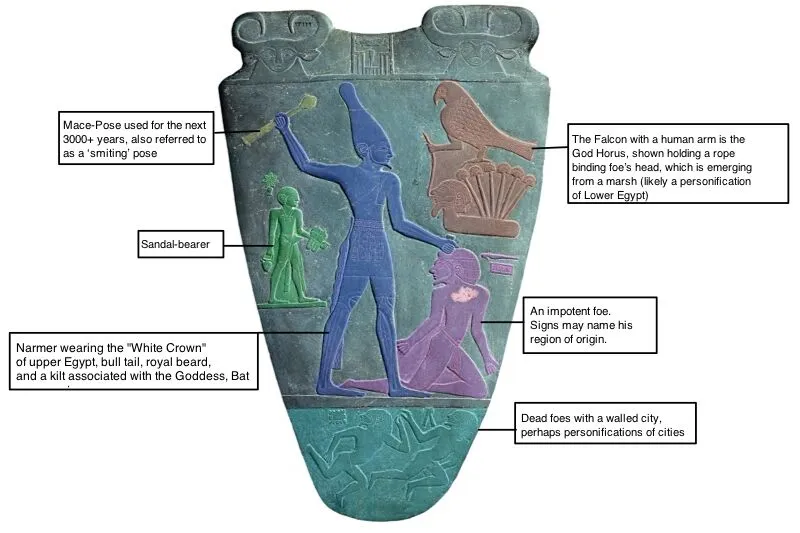
Statues of votive figures, from the Square Temple at Eshnunna
Seated scribe
Standard of Ur from the Royal Tombs at Ur
Great Pyramids (Menkarua, Khafre, Khufu) and Great Sphinx
King Menkaura and queen
The Code of Hammurabi
The Temple of Amun-Re and Hypostyle Hall